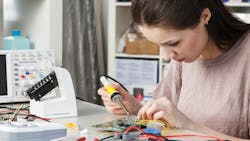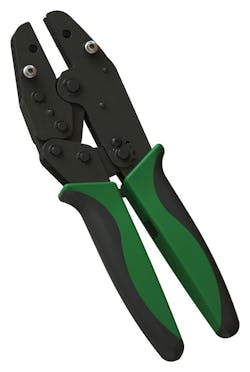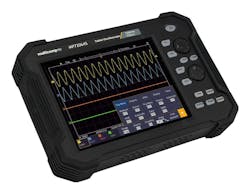What you’ll learn:
- Makers are looking for access to products.
- Makers also want access to tools.
- Makers always look for more information.
- Makers are searching for community.
It’s a wonderful time to be a maker, whether you’re a seventh grader probing the guts of a computer or an accomplished designer who’s inventing blockbuster new products over the weekend.
Electronics are embedded in seemingly everything, including human beings, and they’re smaller, smarter, and increasingly leveraging AI. The pace of change is accelerating to the point that new products go obsolete in years or months, not decades. And that’s okay.
Importantly, the playing field between big companies and clever individuals has leveled quite a bit. Affordable electronic blocks, modules, components, development kits, tools, training, and platforms bring new product innovation within reach of literally everyone. Today’s maker can be tomorrow’s founder—and continue to make!
As a distributor with a robust community of millions of global makers, we spend lots of time channeling the maker mindset (because most of us are makers ourselves), and we’ve documented what we think almost every maker wants. The goal is to help you navigate your maker journey from the moment you pick up your first tiny screwdriver.
We think makers basically want four things.
Access to Popular Maker Product Platforms
Some makers prefer popular products to learn all they can about the process of making interesting applications from a variety of components. Raspberry Pis and Arduinos are common development kits—actually single-board computers—with a plethora of documentation and stories on how they work and how you turn them into complete products. These platforms can cut thousands of dollars and weeks of time off a new product or prototype compared to designing and manufacturing your own printed circuit board.
Meanwhile, seasoned makers often gravitate to the newest, most advanced components so that they can make their devices smarter, smaller, and, consequently, more economical. Why not use one chip that supports Wi-Fi and Bluetooth instead of separate ones? At Newark, you can find a full range of both mainstream and bleeding-edge components.
Getting Access to the Right Tools
Good tools are a need, not a want. But that doesn’t mean you have to buy the highest-end model of each one. Look for quality, value-based tools that will get the job done.
For example, we all need a good crimp tool (Fig. 1). It’s worth spending $25 or $30 dollars for one that lets you work effectively and efficiently and does 99% of what’s possible with the $150 version. Many makers like to replicate the bench they use at work, affordably if they can help it.
As your skills develop, you might want to move up the tool-quality ladder. Do you need an uncompromising solder joint for your invention? It might well be worth buying a premium soldering iron so that the quality of your work is on target every time (Fig. 2).
Your oscilloscope should probably have a similar interface to the one the pros use at work, and be versatile enough to move around quickly and easily (Fig. 3). The good news is you can likely get away with an affordable lower-end model of a respected brand.
Where to Access Maker Information
In most cases, a fellow maker has already done what you want to do. So why not learn from their mistakes and successes? Today, it’s easier than ever to borrow their tips, tricks, hacks, shortcuts, and end-arounds.
Or maybe you’re looking for new ideas on what to make. Fellow makers can help you discover new ideas and expand your understanding of what’s possible. YouTube is a good source for how-to information, but as good as its algorithm is, YouTube ultimately becomes hit or miss. We’ve worked to organize learning content in several other places.
The element14 Community is the industry standard for electronics information-sharing. It has popular technical blogs, videos, and webinars that provide knowledge on the latest in electronics trends such as the Internet of Things and wireless technologies. Hackster offers detailed how-to content on a staggering range of products and projects. You can get any product you need (nearly one million of them) on Newark.com.
We aspire to be the go-to content hub for engineers, whether they want hardcore design information like reference designs, datasheets, and training, or simple fun, inspiration, and friendship.
Getting Access to Other Makers
Makers are among the most self-motivated people you’ll ever meet. But networking is important for both learning and basic human connection. That’s why we call it the maker community. In this post-COVID work-from-home era, online communities are essential.
So, if you’re looking for cool project ideas, collaboration, answers, and a social experience, you can find friendly makers on element14 Community. And you can view first-person how-tos from inspirational people on Hackster.
Overall, these four things are atop the typical maker’s wish list. They’re what we think are the essential considerations for making swift progress in your maker’s journey. Whatever your focus and whatever your dreams, it’s going to be wild and fun.
Everything is electronics these days, and it’s all coming at us fast. Equip yourself, buckle up, and help change the world.
About the Author

Cliff Ortmeyer
Head of Solutions, Newark
Cliff Ortmeyer holds an electrical engineering degree and has worked in the electronics industry for 26 years in a variety of engineering and marketing management positions. He’s been with Newark for six years, most recently as the Global Head of Technology Product Marketing and Solutions Development. Previously, Cliff worked for STMicroelectronics and Coilcraft in positions ranging from Applications Engineering to Market and Business Development.
Cliff holds multiple patents and is an electronics enthusiast with a passion for understanding and leveraging new technologies. His current focus is on the role of new technologies and trends and how they impact the future of developing new markets like IoT through makers and engineers alike.



